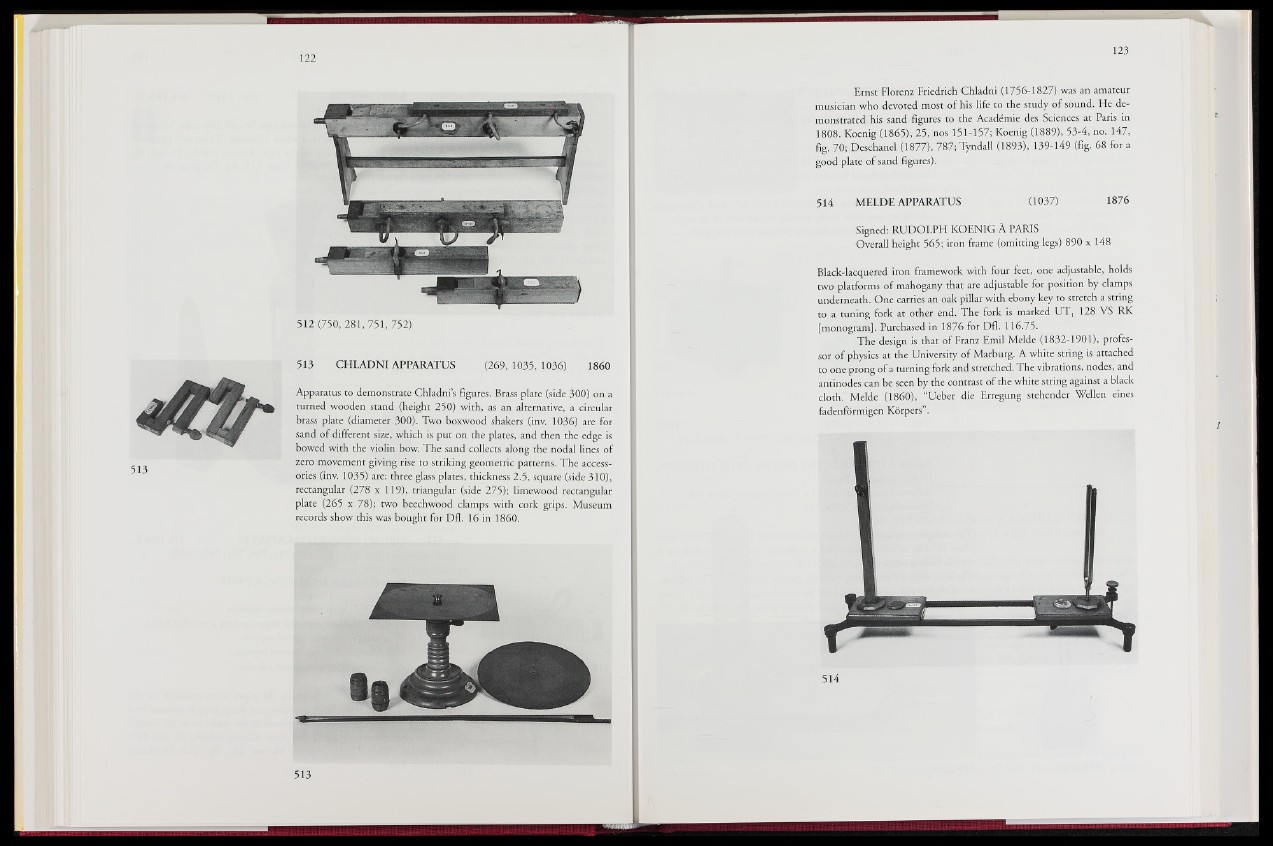
512 (750, 281,751,752)
513 CHLADNI APPARATUS ,(269,1035,1036) 1860
Apparatus to demonstrate Chladnis figures. Brass plate (side 300) on a
turned wooden stand (height 250) with, as an alternative, a circular
brass plate (diameter 300). Two boxwood shakers (inv. 1036) are for
sand of different size, which is put on the plates, and then the edge is
bowed with the violin bow. The sand collects along the nodal lines of
zero movement giving rise to striking geometric patterns; The accessories
(inv. 1035) are: three glass plates, thickness 2.5, square (side 310),
rectangular (278 x 119), triangular (side 275); limewood rectangular
plate (265 x 78); two beechwood clamps with cork grips. Museum
records show this was bought for Dfl. 16 in 1860.
Ernst Florenz Friedrich Chladni (1756-1827) was an amateur
musician who devoted most of his. life to the study of sound. Fie demonstrated
his sand figures to the Académie des Sciences at Paris in
1808. Koenig (1865), 25, nos 151-157; Koenig (1889), 53-4, no. 147,
fig. 70; Deschanel (1877), 787; Tyndall (1893), 139-149 (fig. 68 for a
good plate of sand figures).
514 MELDE APPARATUS (1037) 1876
Signed: RUDOLPH KOENIG À PARIS
Overall height 565; iron frame (omitting legs) 890 x 148
Black-lacquered iron framework with four feet, one adjustable, holds
two platforms of mahogany that are adjustable for position by clamps
underneath. One carries an oak pillar with ebony key to stretch a string
to a tuning fork at other end. The fork is marked UT, 128 VS RK
[monogram]. Purchased in 1876 for Dfl. 116.75.
The design is that of Franz Emil Melde (1832-1901)1 professor
of physics at the University of Marburg. A white string is attached
to one prong of a turning fork and stretched. The vibrations, nodes, and
antinodes can be seen by the contrast of the white string against a black
cloth. Melde (1860), “Ucber die Erregung stehender Wellen eines
fadenförmigen Körpers”.